
Ari Horesh University of Pavia, Italy
25th of December, 2024Hey everyone! Ari here. I am excited to finally write this article. I’ve been updating this article in the past years around 6 times to ensure it is the most relevant list for the latest IMAT, and I doubt this will be the last time. The IMAT is has a different structure than it used to have, so you need to be smart when picking books to study from in order to ensure that you don’t not study things that won’t appear on the IMAT exam.
This list is here to provide you with good books you can use to cover the syllabus of the IMAT but also a bit beyond. My mindset when it comes to studying is that it is better to know the material in more detail than know the material in the exact amount, I am not talking about over-studying topics that aren’t even part of the syllabus, but in general knowing more details about a topic that appears on the exam allows you to think outside the box when they surprise you with a tricky question.

This is the latest edition of the article that was written after analyzing all IMATs from 2011 to 2024, with the upcoming IMAT 2026! I really hope it helps, it took me some time to write. If you have any question please don’t hesitate to ask!
On top of that, this article is not only which books to use for the IMAT, because sure, I could have just made a nice table and mentioned the names and pages (like I already did for my study planner), but here, I want to make sure you understand how to use them properly, combine them with other resources and get the absolute best out of those books.
Content Quick Navigation
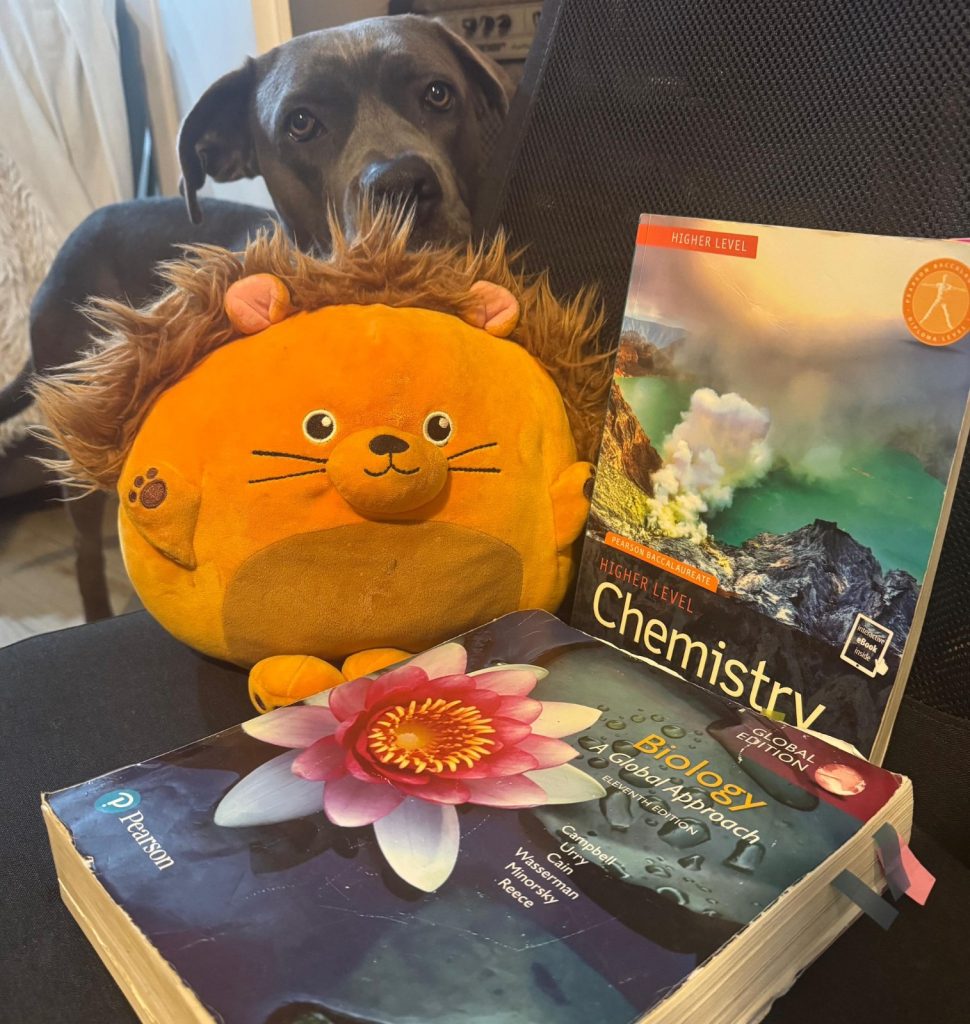
What Makes a Book The “Best” for The IMAT?
That’s a question I don’t often get from my students. They usually listen to my advice without really thinking much about it. While I find it flattering, I want to encourage critical thinking as much as possible because it is one of the study techniques I use when I teach. I encourage students to ask questions and doubt the material, and I show them how to double-check things and be sure they got the correct answer. This is a very common method to use on the IMAT.
Back to our point, what exactly makes a book “the best”? After reading many biology, chemistry, math, and physics books, here are my criteria of the best IMAT books:
- It has to explain the material in a fun, engaging way. Relatively not complex English, but without missing crucial points by being too simple.
- It needs enough illustrations and images to make the concepts visually clear. Some books have great explanations but lack illustrations; I don’t really like using them, as the IMAT is about understanding the overall concept.
- It can’t be boring and demotivating but has to deliver the material sequentially. A good book is written in a way that breaks down even the most straightforward ideas from the beginning and doesn’t assume that the student already understands basic concepts.
- It has to have a PDF version online, which you can download and use with different tools. You can make flashcards and take notes using a PDF and not only a physical book (unless you like making paper flashcards, which also works).
When I researched the best books to study for the IMAT and reviewed many of them, for biology and chemistry (the main core topics that appear on the exam), I found Pearson’s books to be the most comprehensive while being fun and engaging. Both Pearson’s Biology and Pearson’s Chemistry are excellent.
Which IMAT Books Are The Best?
Let’s go through all options for books and discuss which are best for each subject of the IMAT exam:
- Best Books for The IMAT Logic Section: Starting from IMAT 2024, the logic section got a little twist and no longer has the classic questions we know from Cambridge. This is why I no longer recommend “Critical Thinking” by Cambridge as I used to, and the best thing I can recommend is to read a lot of English literature and practice your English level in general because the critical thinking section of the IMAT is now mostly grammar questions and some basic English comprehension. Regarding the problem-solving section, most of the questions appear to be probability and statistics, which you can use in the math books we will discuss later.
- Best Books for The IMAT Biology Section: I have stuck by “Biology: A Global Approach, 11th Global Edition“ since 2019. I love this book; it’s fun, interesting, and full of pictures, illustrations, and examples, and many of my students use it on a yearly basis. I will detail later the best way to study using it. There is also my own Biology book where I compiled some analogies for the biology section; you can find it on this website under the “study material” menu button.
- Best Books for The IMAT Chemistry Section: Same with Chemistry, I love the book “Pearson Baccalaureate Chemistry Higher Level 2nd edition print and online edition for the IB Diploma, 2nd edition“. Unlike the biology book, however, you should use the chemistry book slightly differently, which we will also discuss later.
- Best Books for IMAT Math and Physics: This one might annoy you a bit, but my general tip for this section is to use the your high school books. The best approach for the math and physics section is to learn the basic concepts first, regardless of the language, practice as much as you can, and then, approaching the IMAT, work on making sure you know how all of the terms and everything sounds in English. This way, you will have a nicer time studying for it, as math and physics are mainly about practicing as much as possible, understanding the general concepts, memorizing formulas, and applying them. I will later on recommend some books to practice questions for all subjects.
How To Use IMAT Study Books in The Most Efficient Way
This is the most crucial. I want you to think about it practically. I have had hundreds of students since I started teaching years ago, and all of them had tons of motivation right at the beginning. Naturally, it faded away after a few days of using Pearson’s books. Once the early motivation wanes, you must rely on consistency and practicality. Studying for the IMAT exam takes a while, and you don’t only want to stay consistent, but you also want to not burn yourself out. Yes, you can start by buying every book, building a new shelf in your room (I actually did it back then just for the books; what a nerd), and getting all of the books many other websites recommend, (I saw some other websites recommend like 10 books, and honestly I doubt they read any of them) but realistically you are going to use 2-3 books max, with websites summaries and YouTube videos as supporting sources.
- Focus on biology and chemistry: you can get around 57 points by answering all the questions there correctly, so learning it well from focused resources instead of trying to learn everything about everything makes much more sense.
- You don’t need books to study for the logic section: there are countless ways online to improve your English and learn comprehension and grammar – you could even practice past paper questions from the logic section – although they are no longer the same, they will definitely help in improving the skills needed to solve similar questions.
- For Biology: focus on understanding the concept and memorizing the basic definitions and terms, make flashcards from Pearson’s book, and leave practicing questions for later, after at least one revision of the biology and physiology parts.
- For Chemistry: unlike biology, for chemistry you should focus on solving every single practice question recommended in Pearson’s chemistry book from the pages that are relevant to us).
Using IMAT Biology Books Properly
Let’s talk more about how to use Pearson’s book to start studying for the exam. First of all, allow me to attach 3 core guides. One of them is the study planner that, beyond mentioning the books I already discussed here, also mentions the exact pages you need to review (I won’t do it here, but instead, share some more practical tips on how to use them). I recommend starting with Biology; it is also the most interesting subject, and it will allow you to get used to studying and use some new study techniques.
One of the more important things you will have to start developing when using different IMAT books is the idea of what to study and what not to study. In Pearson’s (and many other books), you have a lot of “connection to the real world” and “real world examples” or even illustrations that, on purpose, show you a very complex pathway – some of my students find it difficult to know what is important and what is not. They include many things that were just given as an example in their flashcards and notes, so let me give you some of those examples from Pearson’s, which I use to teach my students biology for the IMAT:
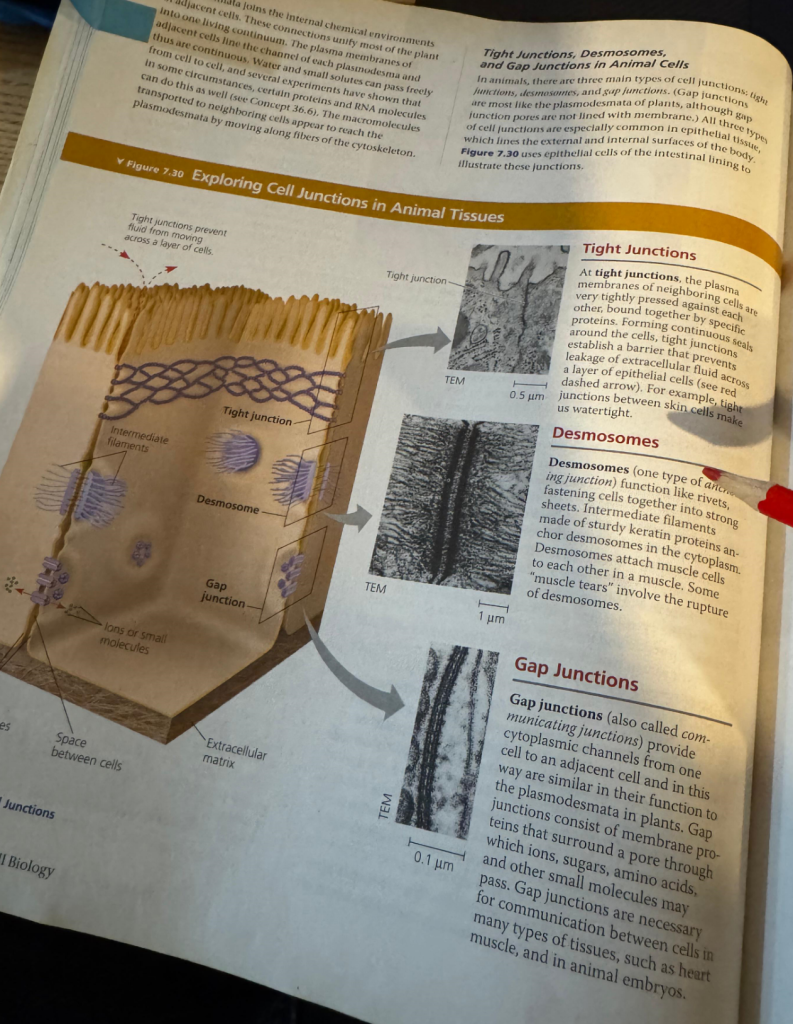
So, the picture I took above is an example of something you will learn in super important biology: how cells connect and stick together. A student could look at it and make flashcards not only from the definitions and general idea but also the size of the subunits, their shape, the proteins that build each one, and their length and type of amino acids and number, which is honesty so not important to remember for the level of the IMAT. That’s why knowing how to extract only the necessary information is something that while takes a bit of time to develop, is a must.
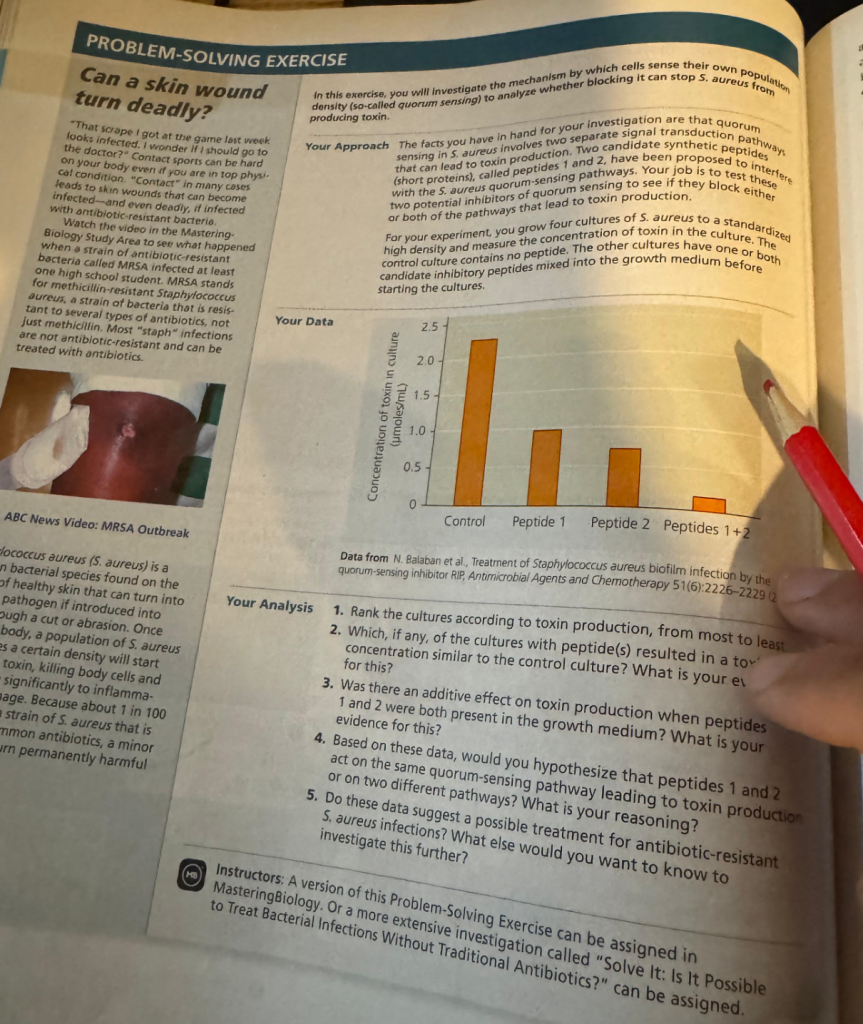
Pearson also gives some really cool problem-solving cases and real-life examples. In this picture, they discuss a certain common bacteria that sits on our skin and, when penetrated by mistake into our body, can really make a mess! Looking at it, the students might get overwhelmed and think that this section is important for the IMAT because, hey! “Ari mentioned this in his IMAT study planner in the biology books”, but I can’t really take every single part and say if it’s important or not to everyone who uses my planner, so it’s useful to develop this sense yourself. (I do it mainly in my course when I teach or coach people one-on-one because it just takes so much time).
IMAT 2026 Most Comprehensive Course!
Hey! Ari is here. If you enjoy reading my articles, using my free study materials and communities for the IMAT, consider joining my IMAT 2026 Course! I took 3 years off my studies to work full time on this project – the most comprehensive, popular, and affordable IMAT course available today. Updated based on IMAT 2025’s questions.Now, I don’t want you to develop the habit of actually skipping those important illustrations and examples. The fact that I don’t want you to learn them for the IMAT or memorize them doesn’t mean they aren’t important, and it just means they serve as a “glue” that connects the random dots you currently memorize without fully understanding what you are studying.
The overall process of learning biology for the IMAT using Pearson’s biology is along these lines:
- You study almost everything and make flashcards from everything because you have no reference or clue about what is important or not.
- You get feedback by asking questions on our WhatsApp community or by contacting me through my coaching system and slowly understanding what is important and what is not.
- You start making fewer flashcards as you understand what is important
- You do IMAT past papers, and you realize you forgot and skipped some parts
- You go back to the biology book and study it again; this time, you know what to focus on as you have the entire framework in your head.
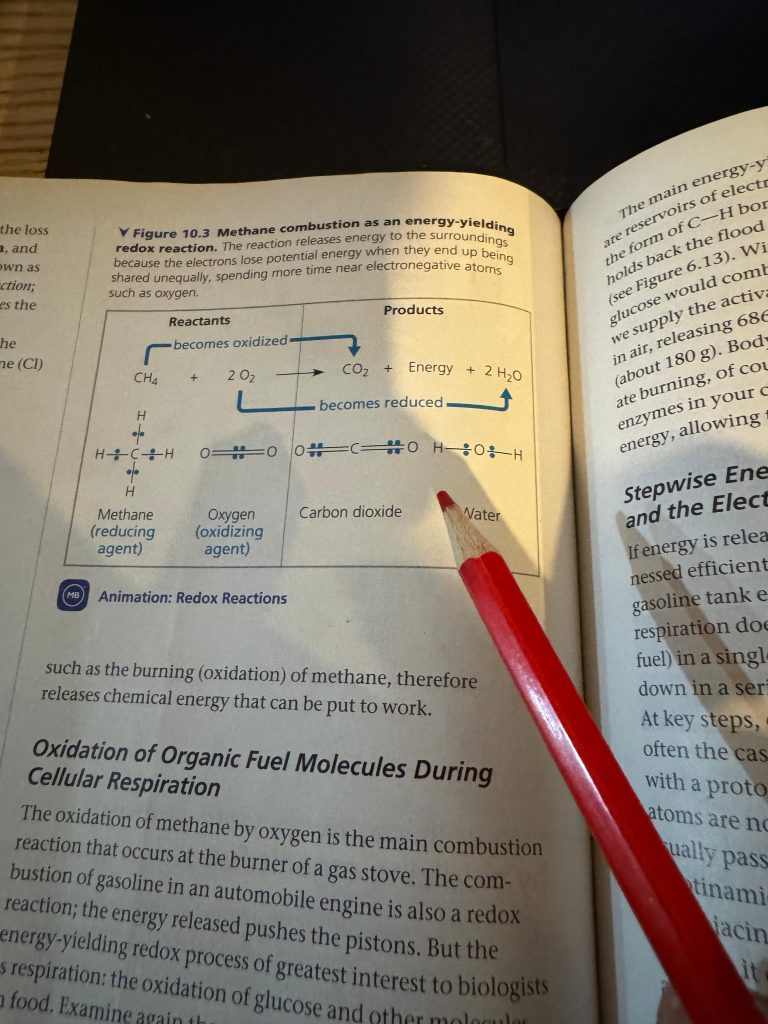
The image above is an example of a small illustration that might look insignificant but is actually very important to memorize. also, take your time and check the “animation: redox reaction” example they offer over there (under the illustration). When you see any illustration, no matter how mall, try to ask yourself questions and connect it to what you study and to real life. It might be difficult initially, but slowly, you will get really good at it over time! And it will, of course, help you in medical school.
Using IMAT Chemistry Books Properly
Let’s discuss how we use IMAT chemistry books in the best way. Unlike Pearson’s biology, the chemistry book for the IMAT is full of examples and solutions that you should actually practice and memorize. The main focus when we study chemistry should be on practicing, practicing, and more practicing. Unlike biology, it’s not enough to only understand a concept; you have to practice as much as possible; otherwise, you will waste your time. Let me give you two scenarios of my past students to illustrate this example about the chemistry books for the IMAT:
- Student 1: Let’s call them Gilbert. Gilbert is a very hard-working student, but he just finished Pearson’s biology, and he moves to chemistry to start studying; he implements the same study techniques that he had used so far successfully in Biology and only reads the chemistry book, makes flashcards from the concepts, follows the study planner on time, and sometimes even finishes a bit earlier and manages to add some math and physics practice on the same day. He tries to solve some of the questions mentioned in the book, but he only solves around 10-20% and then moves on once he feels like he understands the basic concepts to keep up. Gilbert is now 2 months before the IMAT exam, opening the past papers for the first time and managing to score barely 5 questions out of all 15 chemistry questions. Gilbert is super stressed and reviews the entire Pearson’s book again, solving every question. It takes him the entire summer, and he neglects biology to practice chemistry as much as possible.
- Student 2: Let’s call her Anna. Anna is also really hard-working, but she doesn’t really follow the study planner on time; she feels like it won’t be possible to finish it on time without solving every single exercise in the book, so she would rather take her time and solve everything rather than trying to keep up. 2 months before the exam, she had only finished 80% of the chemistry book. Still, she was already able to score 8-9 out of the 15 questions of chemistry on past IMATs, so instead of going back to Pearson’s, she now has time to continue analyzing past papers of the IMAT and of similar exams, eventually reaching a point where she solves 95% of the chemistry questions she faces.
Both of the stories above were real students of mine who studied chemistry using my books and planners. Still, one used it properly, and the other tried to finish it as soon as possible, eventually reaching a point where they had to review the entire thing again and neglect other subjects. This is so common among my students, so I make sure to let them know right from the beginning how they should approach chemistry.
As you can see from the radar chart below, while there’s an overlap between how you should memorize and study biology and chemistry, in chemistry, you should really put your effort into solving questions and practicing. It is important in biology, but not as understanding the concepts.
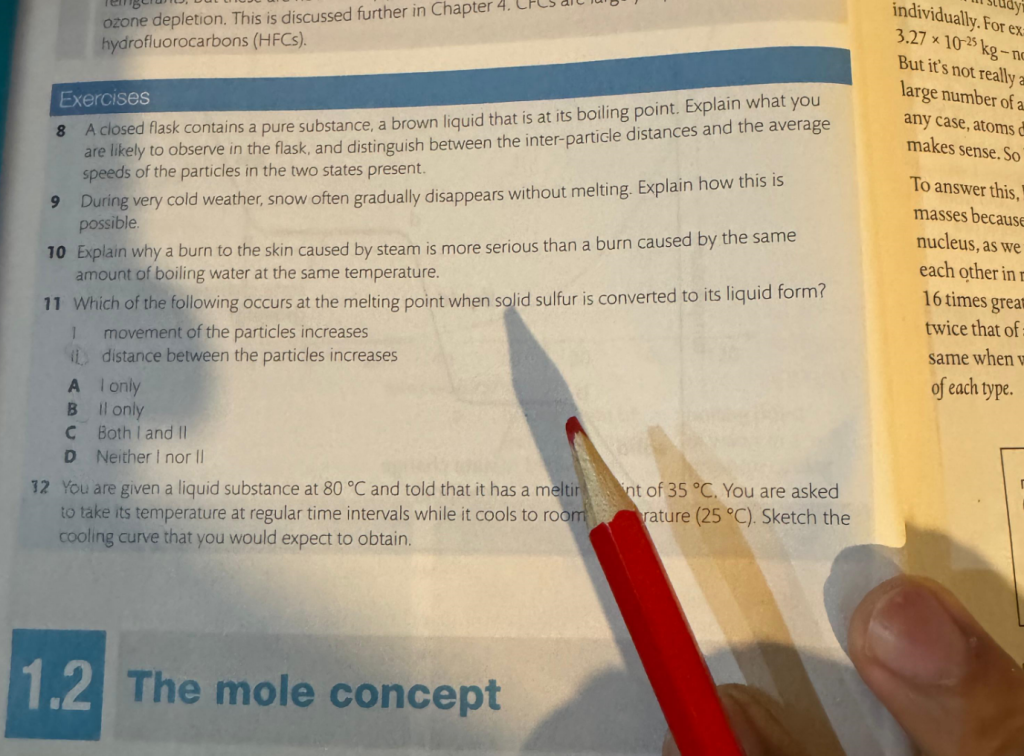
In the picture above, I highlighted Pearson’s book’s “blue questions” – those questions you really have to take your time to solve. If you don’t know how to solve something, don’t skip to the next one – and also don’t check the answer right away; take your time! you will understand later on in your studies how important it is to take your time.
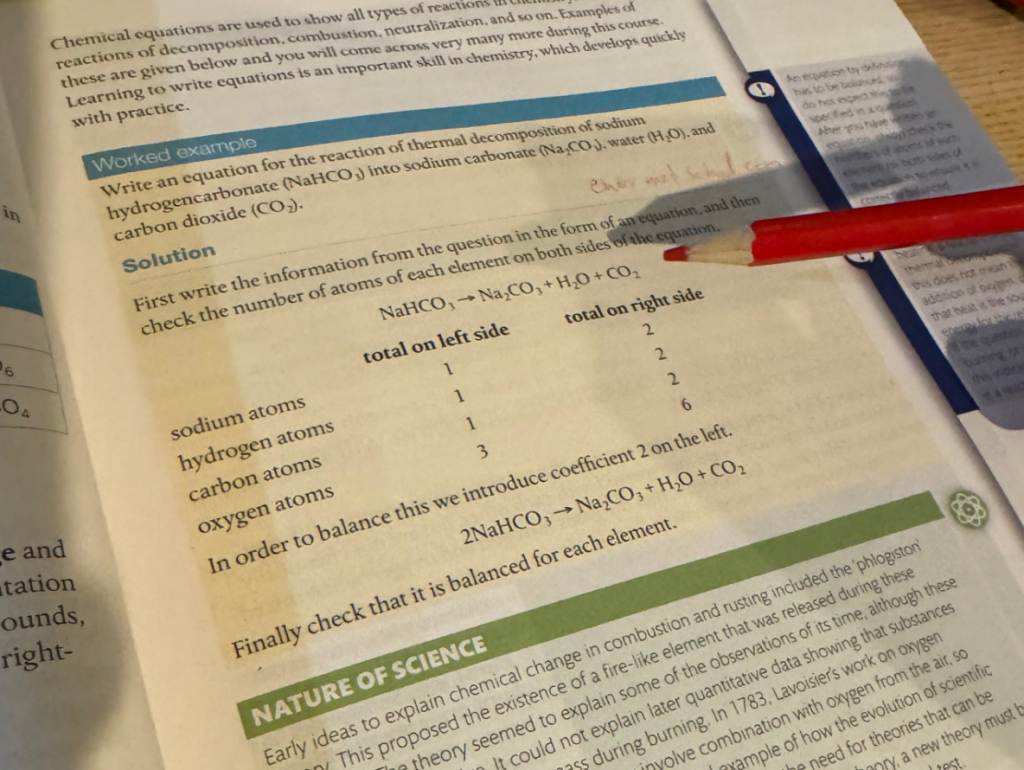
The example above is where they show you a “worked example” in Pearson’s book. This is when they give you the answer already, so you can try to solve it yourself. Even if you know the answer, use this to confirm that you understood the steps and reach the same answer.
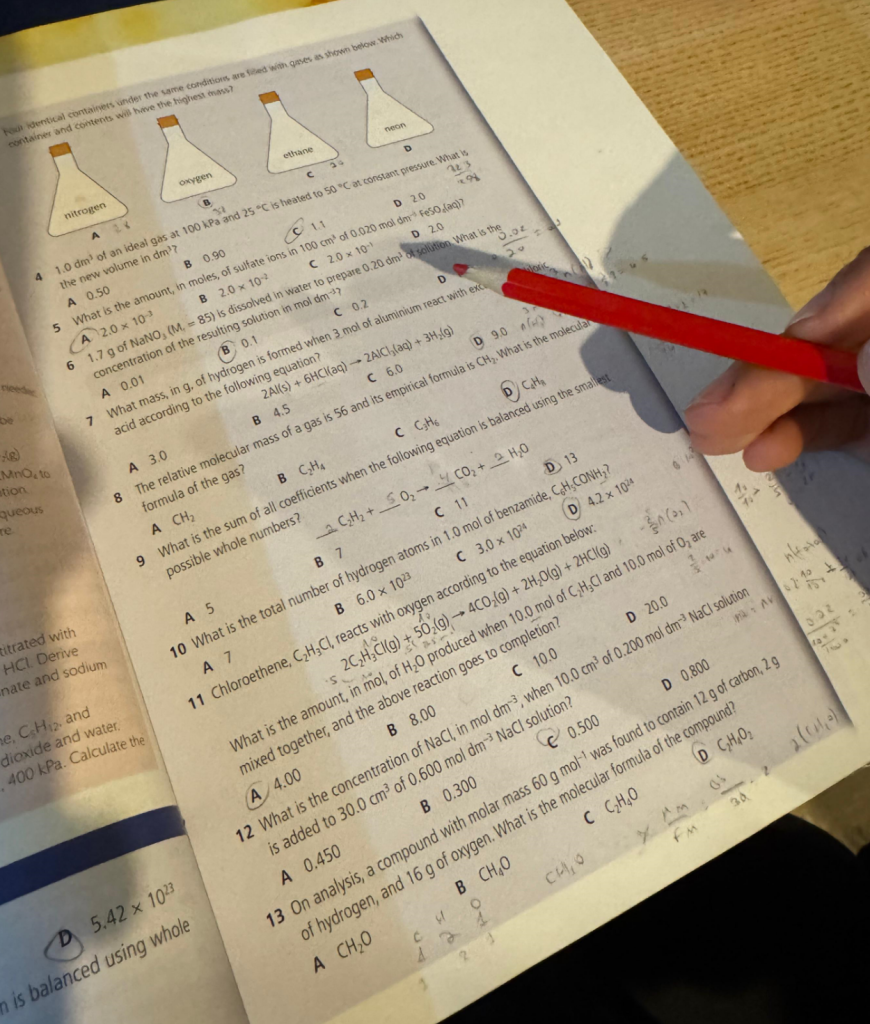
And of course, the end of the chapter questions also have a “Red section”, which are super difficult and mind-breaking questions – I personally love it and challenge you to solve and discuss them in our communities – they are super fun and really interesting. If you manage to solve them, the IMAT will look like a piece of cake for you.
Books for IMAT Math and Physics
You have a sea of books to choose from for math and physics. The overall best way to approach this section considering that you are studying from scratch, is to:
- First of all, use your high school books in your native language. practice concepts such as basic algebra and geometry, as well as probability and statistics because they also appear in the logic section. Make sure you absolutely master the basic algebraic skills; powers, fractions, equations etc.. If not, then go back and review them, even if it seems redundant or too easy.
- You can move on to Physics and study using online videos and exercises when you get a better idea of math and the basics.
- After you study using online resources, as you already have pretty good knowledge in both math and physics, you can start solving past papers of the IMAT and use SAT Practice books, like SAT by Barron’s. (I promised you I would recommend at least some books for it).
- Finally, focus only on past papers and similar exams, as well as SAT-like questions as much as you can, and you should be fairly prepared.
Key Takes
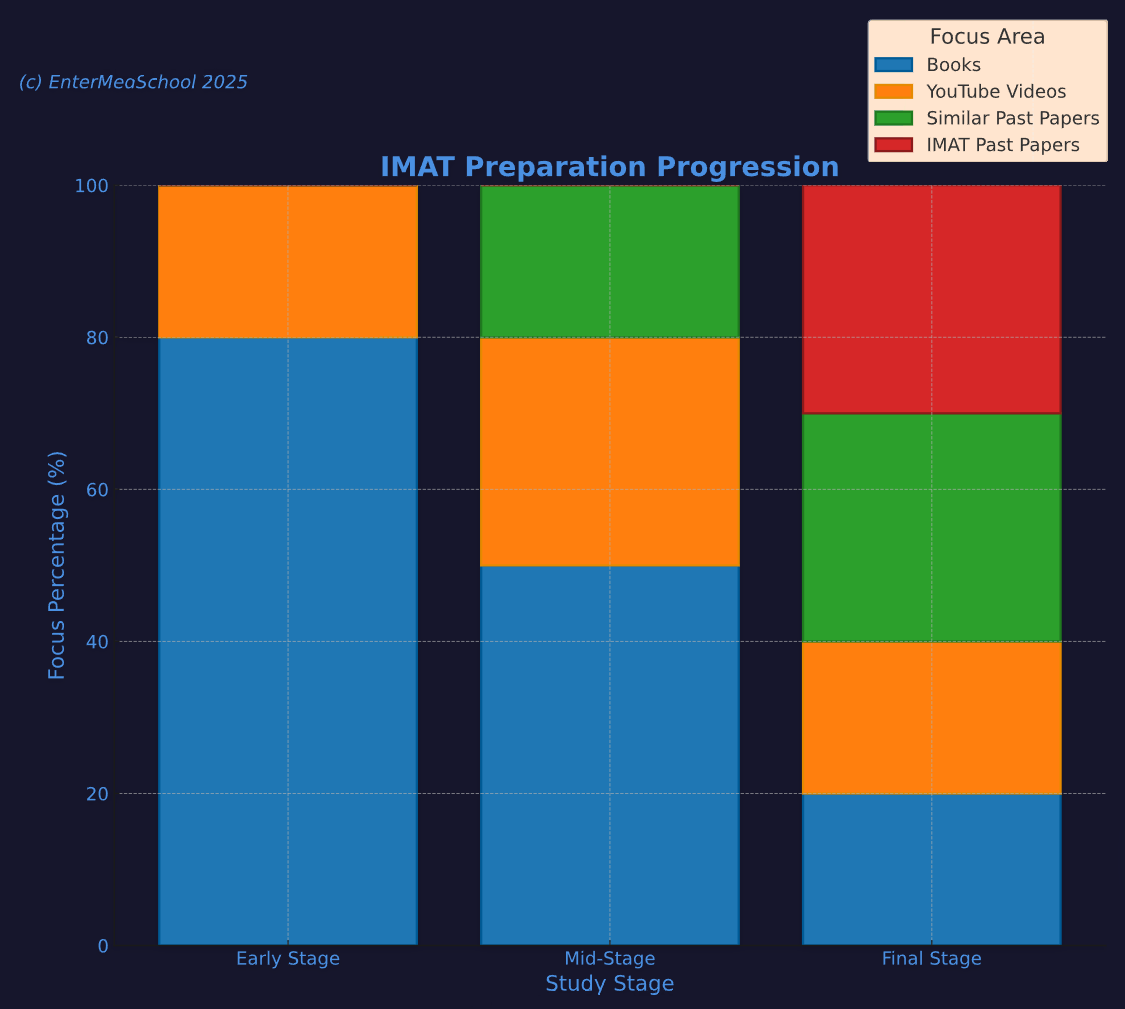
To summarize, I want you to see the visualization above to understand how much weight each book and section should take you. When you start studying, you should mainly focus on books and use YouTube videos to understand the material. When you reach the summer, 2-3 months before the exam you enter the mid-stage of your studies, and should also start implementing outside sources of mock tests with questions similar to past papers. Do your 2nd revision over the material, but don’t spend more than 50% of your time using books. During the last 1-2 months when you enter your final stage of the IMAT preparation, using books should be 20%. Mainly focus on the final refinements of your knowledge and strategy.
If this article helped you out, I believe more content on my website will help you even more. I have guides on the IMAT, choosing a university, and so much more! Here are some articles that are related to this one 🙂




